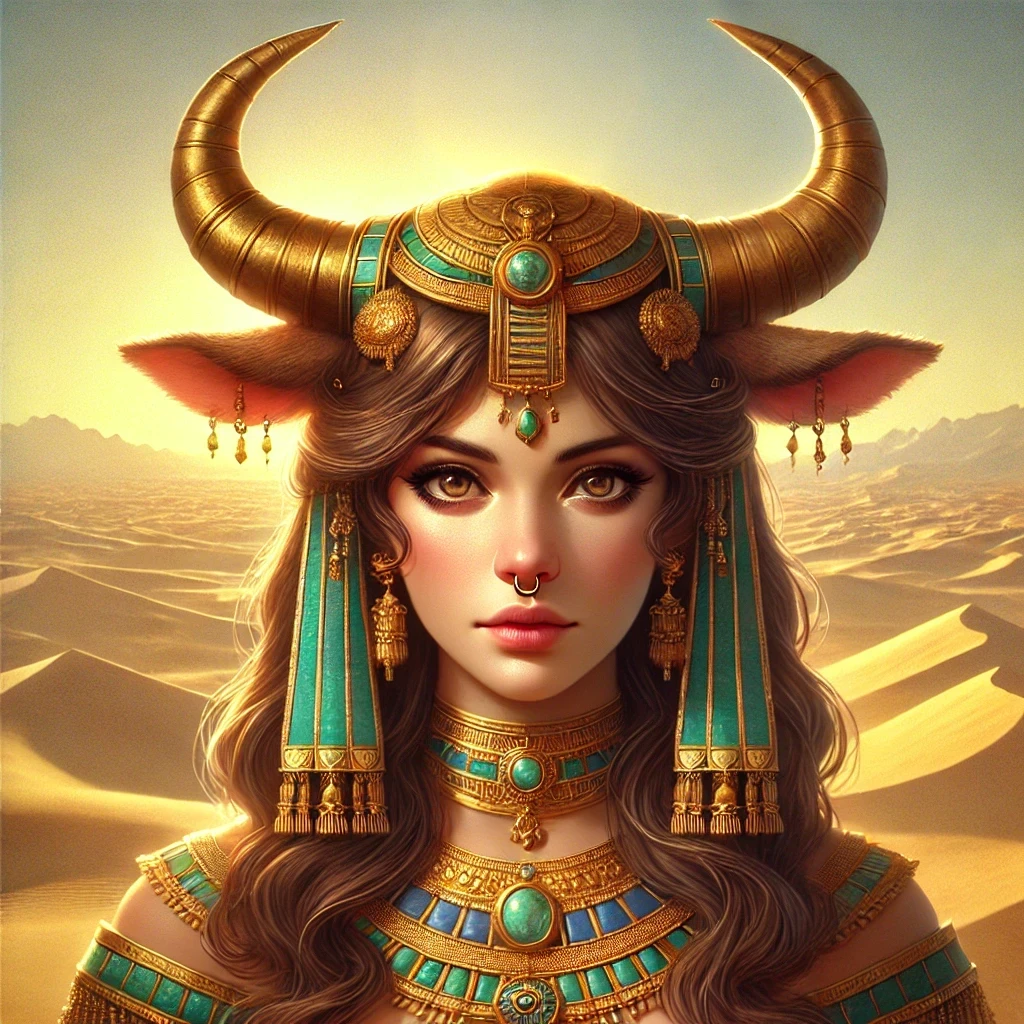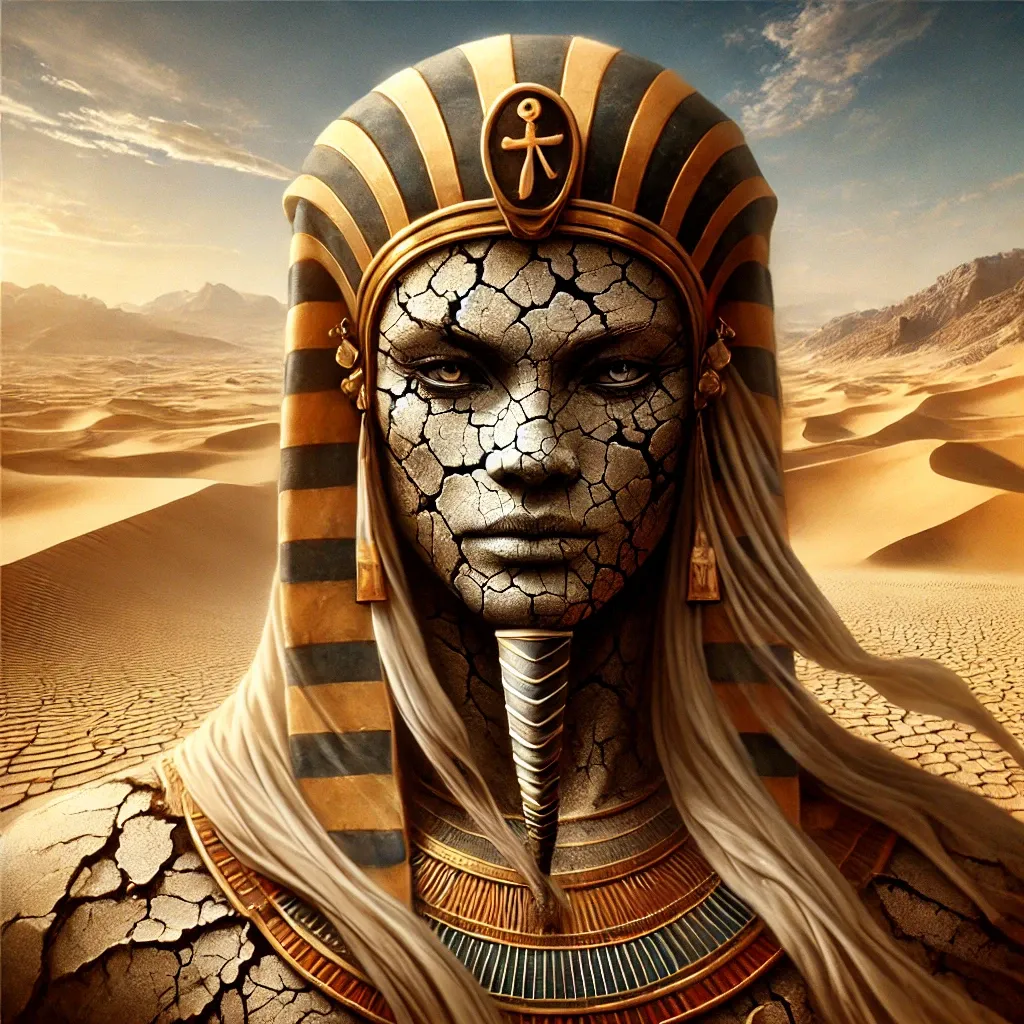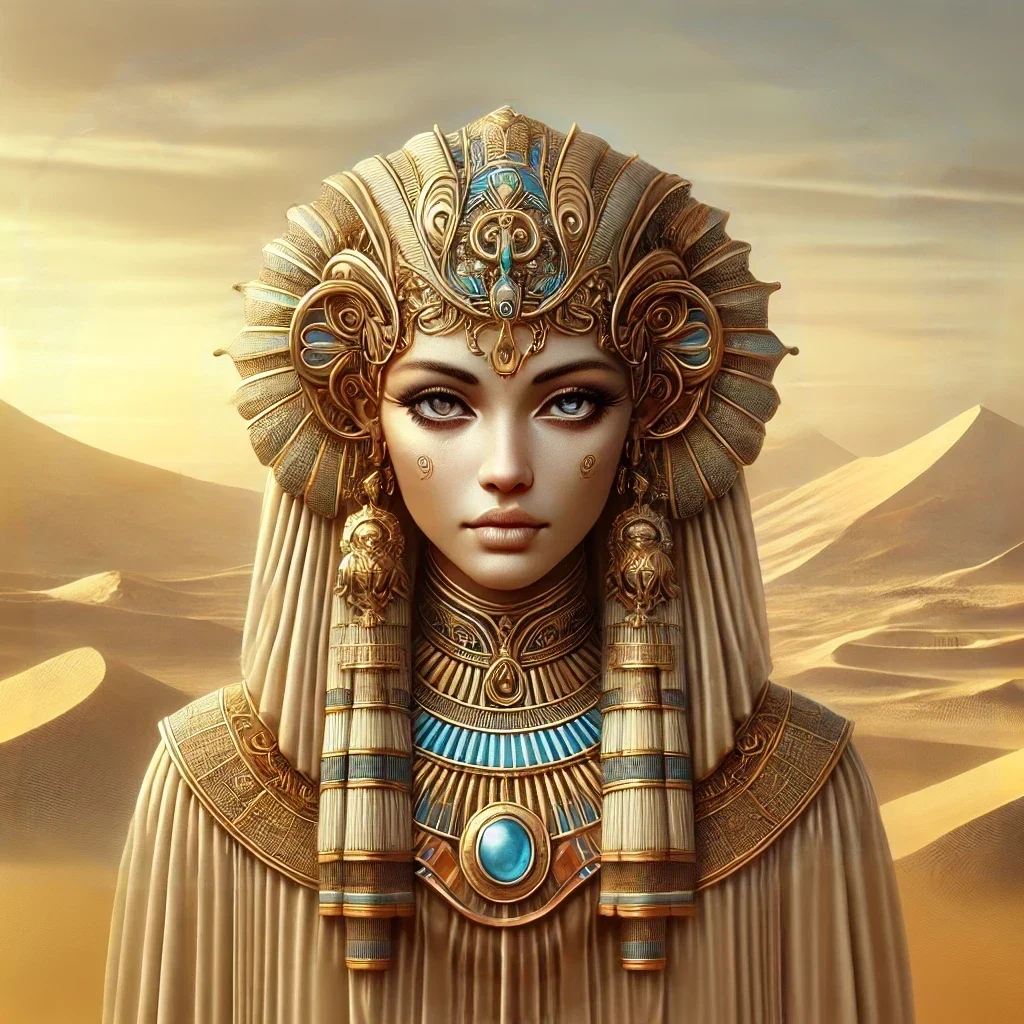Hathor, also known as Het-Heru (“House of Horus”), was one of the most venerated figures in Egyptian mythology. Her titles include “The Golden One,” “Mistress of the West,” and “Lady of Turquoise.” Worshiped across millennia, she was associated with love, music, beauty, motherhood, and fertility. Her name, “Het-Heru,” reflects her role as a celestial figure and protector of Horus. Though her attributes evolved over time, she remained a central figure in religious life, with temples dedicated to her across Egypt.
Origins
Predynastic Roots
Hathor’s origins trace back to Egypt’s Predynastic Period (c. 4000 BCE). Early depictions show her as a cow or cow-headed woman, emphasizing her connection to fertility and nourishment. The cow symbol, integral to early agrarian societies, represented sustenance and maternal care, attributes later personified by this goddess.
Dynastic Development
By the Old Kingdom (c. 2686–2181 BCE), her cult gained prominence. She was revered as the consort of Ra, the sun god, and linked to the sky. Her association with the afterlife emerged as “Mistress of the West,” guiding souls to the afterlife. The temples at Dendera and Thebes became major centers for her worship.
Appearance
Iconography
Hathor is most famously depicted as a woman with cow ears or a headdress featuring cow horns encircling a solar disk. This symbolism ties her to both maternal care and the sun’s life-giving energy.
Variations in Depictions
At times, she appears entirely as a cow, symbolizing her nurturing aspect. Other depictions include her as a sycamore tree, offering sustenance to weary travelers, or as a lioness, representing fierce protection.
Abilities
Divine Powers
Hathor wielded immense influence over emotions, particularly joy and love. She was the patroness of childbirth and music, believed to bring harmony and happiness.
Protector and Guide
As a guardian of the dead, she comforted souls during their journey to the afterlife. In this role, she merged with the goddess Nut, extending her influence to the heavenly realm.
Myths
The Distant Goddess
One of Hathor’s most famous myths recounts her transformation into Sekhmet, the lioness goddess of destruction, to punish humanity. When her rage threatened to annihilate all life, Ra, the sun god, pacified her with beer dyed to resemble blood. Drinking this, she reverted to her benevolent form, restoring balance.
Hathor and the Sistrum
Another tale highlights her invention of the sistrum, a musical instrument associated with ecstatic worship. This artifact symbolized her joyous essence, often used to invoke her presence during festivals.
Symbolism
Associations
Hathor embodied duality: nurturing mother and fierce protector. Her symbols included the cow, representing sustenance; the mirror, reflecting beauty; and the papyrus, denoting fertility.
Celestial and Earthly Connections
Linked to the Milky Way, she was seen as a celestial cow whose milk formed the stars. On earth, she governed music, dance, and love, enriching daily life.
Associated Objects, Animals, Plants, or Minerals
- Objects: The sistrum and menat necklace, both ritual tools, symbolized joy and renewal.
- Animals: The cow and lioness reflected her nurturing and protective roles.
- Plants: The sycamore tree, associated with shade and sustenance, represented her earthly gifts.
- Minerals: Turquoise and malachite, often mined in Hathor’s name, symbolized prosperity and divine favor.
Relationships
Ties to Other Deities
Hathor shared close ties with Ra, serving as his daughter and eye. She also connected with Horus, embodying his mother and consort. Her link to Sekhmet revealed her dual nature as both gentle and fierce.
Influence on Mortals
Pharaohs often invoked her favor, portraying her as a divine protector and guide. Her influence extended to women, musicians, and merchants, who sought her blessings for love, fertility, and prosperity.
Trivia
- Hathor’s festivals, such as the “Feast of Drunkenness,” celebrated joy and fertility with music and dance.
- Temples dedicated to her, like Dendera’s Temple of Hathor, feature intricate celestial carvings, reflecting her cosmic role.
- She was sometimes called “Mistress of the West,” guiding souls to the afterlife.
- Hathor’s worship spread beyond Egypt, influencing deities like Aphrodite in Greece and Venus in Rome.
- Archaeologists have uncovered mines in Sinai dedicated to her, highlighting her role as a patroness of miners.



